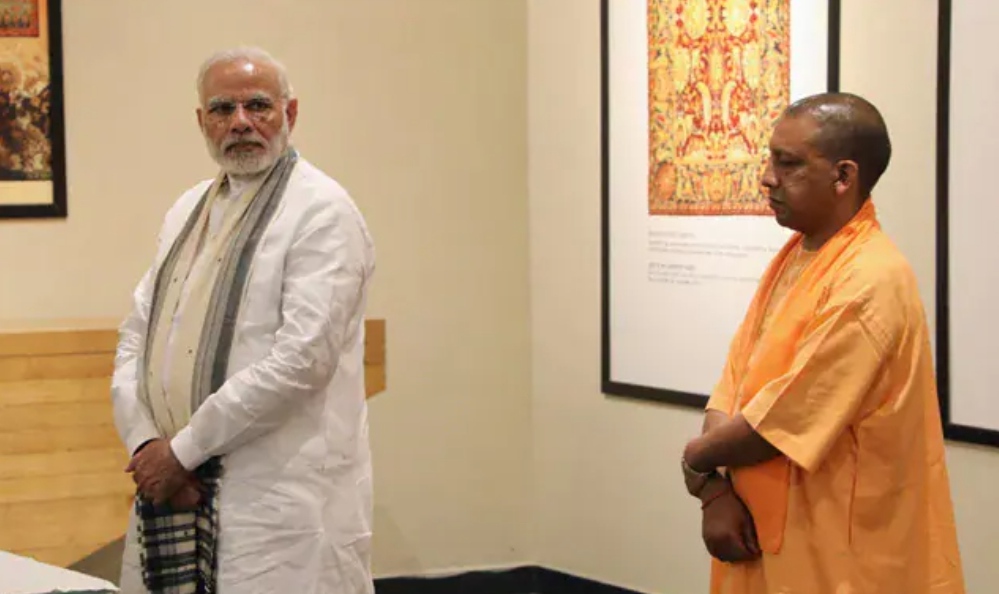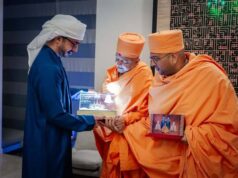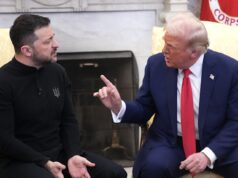In UP, BJP = Yogi Adityanath. The Party Takes A Tough Call

Despite a significant chunk of senior leaders in Uttar Pradesh conveying their dissatisfaction with Yogi Adityanath to the BJP’s decision-makers, the party is clear that the next state election, now less than a year away, will be contested without any change to his status. The view within the party, sources say, on the condition of anonymity, is that it’s best to wait for the election result. If it is not commanding, the party can then justifiably “cut him down to size”.
All of last week, representatives of the BJP and its ideological mentor, the RSS, travelled to UP to survey the increasing criticism of Yogi Adityanath, age 49. The resentment against him had been growing for a while with critics alleging that he consults them for neither decisions nor feedback, but it peaked as the invidious second wave of Coronavirus spread through India’s most populous state. The mission to gauge Yogi Adityanath’s standing has reportedly found truth in the charges of disenchantment with him, but, as evidenced from a tweet by BL Santosh, General Secretary of the BJP, on June 1, Yogi Adityanath is secure. For now.
Not acting against Yogi Adityanath should be considered the BJP’s UP compulsion. In virtually every BJP campaign for states ranging from Bihar to Bengal, he has been given the status of a star campaigner. So, to downsize him in any real way right now would be seen as an admission of a mistake. There’s also the fact that his centralised control can work to the BJP’s advantage.
In 2017, when it won more than 300 of a total of 403 seats, the gigantic vote was undeniably for Prime Minister Narendra Modi. The party decided that such a strong result could be consolidated into effective governance only by a decisive leader who would also epitomise the commitment to Hindutva. So, Yogi Adityanath, five-time MP from Gorakhpur in the eastern part of the state, was given the job.

Yogi Adityanath was not at a meeting held less than two weeks ago on the electoral strategy for Uttar Pradesh
The decision was unconventional. Yogi Adityanath, a saffron robe-wearing priest, does not have the organisational discipline or credentials of belonging to the Sangh. He drew his influence from his standing as the top priest of the Gorakhnath math or sect on his home turf. And his Hindu Vahini, a youth organisation, was both feared and instrumental in the politics of the region.
This enabled his appointment as Chief Minister at a meeting of the BJP’s elected candidates, where the party’s central observers made the surprise announcement of his name. There was no dispute on this name and he was the consensus choice. In a sprawling state with competing factions among the party, the BJP believed that Yogi Adityanath would be the firm and tough binding force.
While Yogi Adityanath’s administrative credentials were doubted – and his deliverables are not seen as particularly impressive, his Hindutva icon status has provided a strong cover. “He is not a UP leader anymore. He is a Hindutva icon who has mass appeal across the country. Even state units from the south want him to come and campaign,” said a senior BJP leader from UP.
Till April this year, those within the party and those in opposition who found the Chief Minister wanting relied mainly on charges of him favouring the Thakurs or upper castes for key roles and appointments. He was also seen as inaccessible to everyone except his key aides and uninterested in including senior ministers in processes.
Then, the second wave erupted, with indicting pictures of dead bodies floating down the Ganga, and of village after village submerged with mass cremations. The administration and the Chief Minister insisted that there was no fudging of data to disguise the extent of the crisis. But the pictures spoke for themselves, contrasting the implausible claims of a situation well under control. And its mismanagement made sure that the dam of patience broke.

The Covid second wave’s indicting pictures of dead bodies floating down the Ganga in UP and of village after village submerged with mass cremations shook the state
In itself, the mishandling of the second wave was not what triggered BJP leaders. But it provided them with an entry point to voice the frustration that had been assembling within them for the last couple of years. Leaders had also just witnessed the PM accepting feedback from MLAs in Uttarakhand who were railing against the Chief Minister there; he was quickly replaced in a rare mid-term change. This incentivised the UP brigade to make their own complaints known.
But UP is no Uttarakhand. And in any case, the shuffle in Uttarakhand had hardly been seamless. The new Chief Minister, Tirat Singh Rawat, has made a series of statements, including on ripped jeans and the US ‘ruling India’, that have been awkward for his party. And his handling of Covid after the Kumbh Mela has been startling.
Yogi Adityanath was not at a meeting held less than two weeks ago on the electoral strategy for Uttar Pradesh. The PM, Home Minister Amit Shah, BJP chief JP Nadia and several RSS officials, including Dattatreya Hosable, discussed how to correct missteps in India’s politically most vital state. The mood at this meeting was clear – that UP leadership needs an Uttarakhand-like overhaul – only more dramatic and drastic. A general consensus was built that structural changes could be made to the state BJP unit and the UP government. It was after this that BL Santosh, BJP General Secretary, was rushed to Lucknow to meet party functionaries and take ‘feedback’. Yogi Adityanath wasn’t present in Mr Santosh’s meeting with workers at the party office, but they did meet separately.
There was speculation that one of Yogi Adityanath’s two Deputy Chief Ministers, Keshav Maurya, will be asked to serve as BJP state president. And a former senior bureaucrat, AK Sharma, known for holding the confidence of the PM, will replace Keshav Maurya as Deputy Chief Minister. AK Sharma was recently made a member of the Legislative Council in the state, and he has been entrusted with fixing the Covid situation in Varanasi, the PM’s constituency. This Delhi-dictated elevation of Mr Sharma has been a huge irritant for Yogi Adityanath. Among the conflict zones, sources say, has been AK Sharma’s presence at official meetings led by the Chief Minister on Varanasi.

For Chief Minister Yogi Adityanath, the landscape is clear – a poor election result will mean a reconfiguration of his place in the scheme of things in BJP.
Reports of AK Sharma’s role being conflated with a PM-vs-Yogi problem have multiplied. Today, sources said that the PM had called Yogi Adityanath to wish him on his birthday; this was made known to reporters after speculation over why the PM had not wished Yogi Adityanath on Twitter. Sources said the PM has, during the second wave of Covid, not wished any leader on Twitter, once customary of him.
After BL Santosh returned to Delhi and shared his report with the BJP’s top leadership, nothing has changed. The BJP will go to the polls with Yogi Adityanath as its face and Swatantra Dev Singh as the party state president. But the party cannot ignore that the protests were so loud that a Union Minister wrote a letter to talk of the difficulties faced by his constituency in having basic Covid needs addressed. And MLAs and party workers created enough pressure for the PM and the entire Sangh establishment to take note.
Party leaders privately admit that the present impasse reflects poorly on both the Chief Minister and the central party leadership. But the hope is that the last few weeks have signalled to Yogi Adityanath that his role is being questioned; rather than forcing some form of compliance from him, the party hopes he will have a change in attitude. For the Chief Minister, the landscape is clear – a poor result will mean a reconfiguration of his place in the scheme of things; a strong result could bring him even bigger stature in his party, and make him the outright runner-up to the BJP’s biggest face for any election, the Prime Minister.




